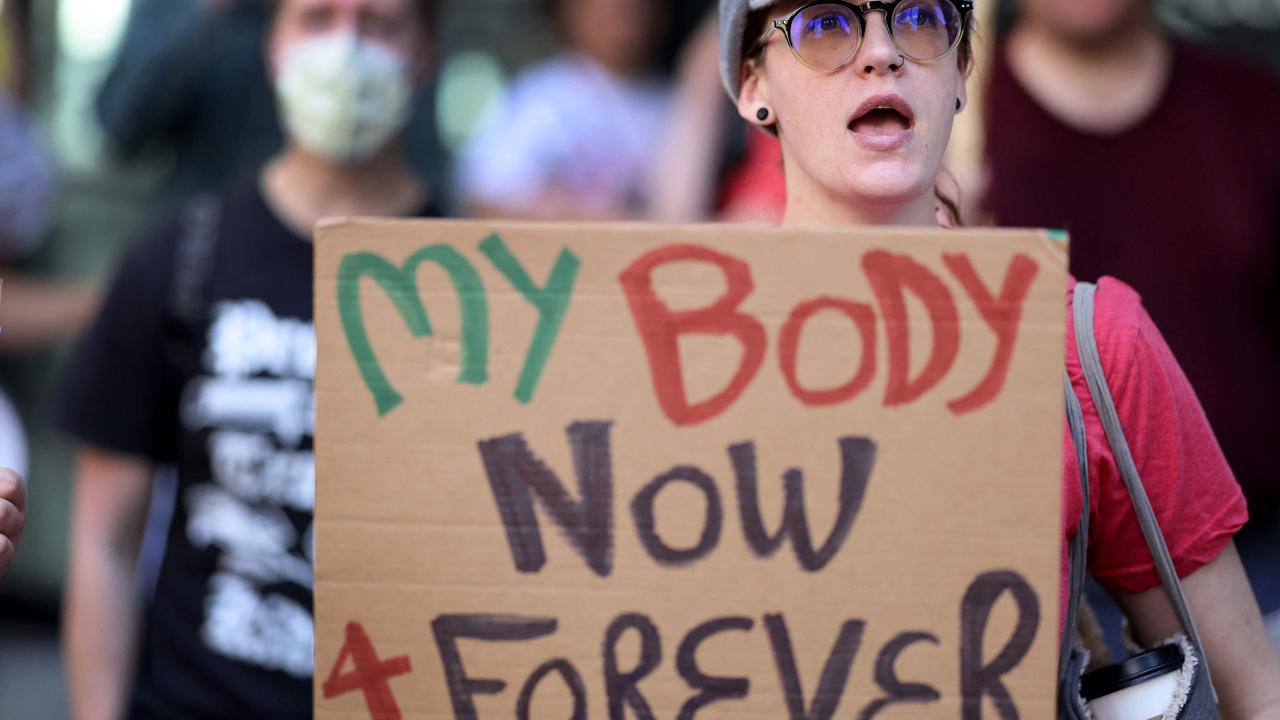‘Disinformation’: Australia reaches critical reproductive rights ‘tipping point’
It has been one year since abortion rights were dramatically stripped in the US – and it comes amid a critical time for Australians too.
COMMENT
It has been one year since the overturning of Roe v Wade in the US.
Meanwhile, this month, the West Australian government tabled an abortion reform bill. WA is proposing to move abortion from the Criminal Code into the Public Health Act.
This Bill will mean that people in WA no longer face draconian approval processes and interstate flights in order to access their choice of healthcare.
Importantly, the Bill makes wording changes to a larger piece of legislation that already enabled abortion provision. It is momentous because it will improve abortion access in a jurisdiction which already affirms the right to choose.
Anti-choice picketers will still rally against us. Anti-choice rallies in Australia will continue to spout disinformation and fuel fake news.
We’re at a tipping point towards reproductive rights.
The devil’s in the detail.
In Australia, each state and territory has their own abortion law, like a large web with eight different radial strands.
Other countries can just tear down their whole web at once and re-weave it. But here we need to address each radial strand at a time. Carefully. Methodologically. Together.
We have been weaving linkages towards abortion access in Australia for decades.
Doctors have been researching ways to reduce the number of abortion-related scans, visits and subsequent stress. Nurses have been navigating loopholes to reduce patient travel distances and healthcare costs. Aboriginal and Torres Strait Islander health workers have been redefining community-controlled methods of abortion care. Caring people within communities have been training as abortion doulas.

Health policy has gradually shifted to better reflect the evidence base on abortion care.
In 1998, WA made most cases of abortion legal. This was not easy. In order to pass the Bill, WA introduced a series of clauses which made abortion access tricky, such as needing two doctor referrals.
When tabling abortion law reform bills, all states and territories have had to come to terms with obscure amendments that intentionally increased barriers to abortion access.
At the centre of our web of abortion legislation is the Federal Government, which can’t control what happens on any of the radial strands. It can only provide guidance from afar.
The Federal Government provides health activity funds to state and territory governments for sexual and reproductive healthcare, which each health region either implements or overlooks.
When abortion was criminalised, some health services used that as an excuse to stall on providing abortion access. Now that abortion is being embedded within health law, that’s not a valid excuse.
A Senate Inquiry on Universal Access to Reproductive Healthcare attempted to highlight the inconsistencies of abortion care access, hearing from experts across Australia.
Last month, a Senate Committee report titled Ending the Postcode Lottery outlined 36 recommendations for healthcare reform.

It offered no revolutionary suggestions for change. Rather, it offers a realistic to do list.
They are minor adjustments for our health system that will incrementally increase access. It will carefully untangle the financial barriers that people in our communities struggle with every day.
It is not glamorous, loud or rally-inducing. But as we face a cost of living crisis, it offers something that we all desperately need – moves towards timely, compassionate and universal healthcare.
This is the tipping point towards reproductive rights in Australia.
What’s changed to get us here? Everything.
Roe v Wade being overturned means that more people in Australia are talking about their own struggles to access abortion care.
We are speaking with each other about our community experiences of abortion. We are reflecting on the times our loved ones asked to borrow money and couldn’t explain why.
We have a bipartisan National Women’s Health Strategy seeking universal access to abortion by 2030.
We have a National Women’s Health Council tasked with addressing issues of access and equity.
The WA Bill is timely. This year marks 25 years since abortion law has been revisited in WA. While WA used to be ahead of the rest, it’s now trailing behind.
And this is the policy cycle. Progress, slowly but surely.
July will mark one year since abortion access legislation was enacted in South Australia.
August will mark two years since safe access zones were nationalised.
September and October will mark four years since abortion was reformed in ACT and NSW.
December will mark one year since reforms in the NT.

Change is never linear.
Global backlash against gender equality is stronger than ever. In Australia, we are hearing from friends and relatives in places like Afghanistan, the US and Uganda about personal and political impacts of regressive policy shifts.
The global anti-choice movement is attempting to erode our collective energy, which is why it’s important to share news of progress here.
Australia’s at a tipping point. We are not only revisiting historic abortion policy, we are improving it.
WA is three and a half times the size of Texas. It accounts for one-third of Australia’s land mass.
The WA Bill is not yet in the bag. But the attitude of West Australian voters is clear.
Last week, the WA Government released findings of a consultation on abortion laws which found overwhelming community and medical practitioner support for change.
More Coverage
Abortion is healthcare, and Australia knows it.
While we witness the global struggle post Roe v Wade, let’s continue conversations around board rooms, office lunch rooms and our own kitchen tables.
Bonney Corbin is Head of Policy and Research at MSI Australia.





